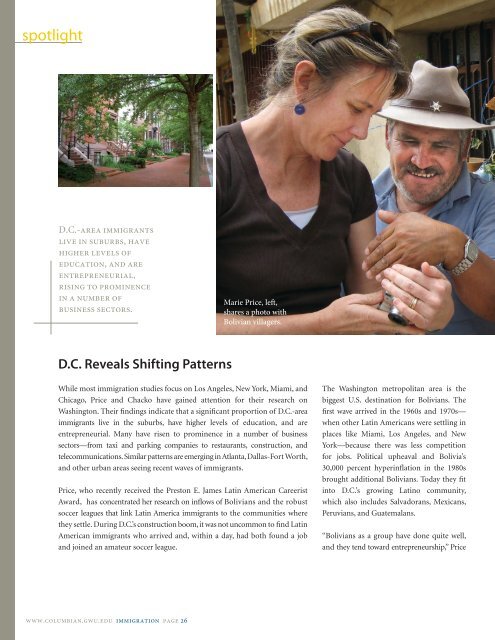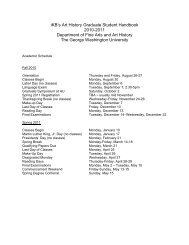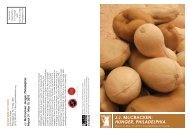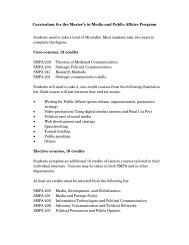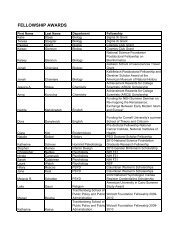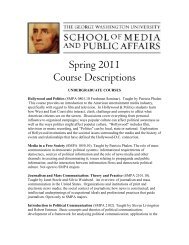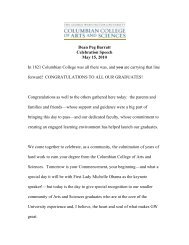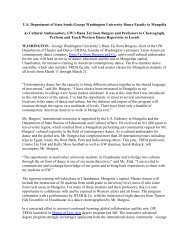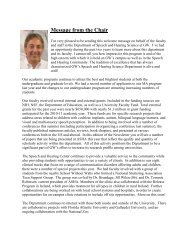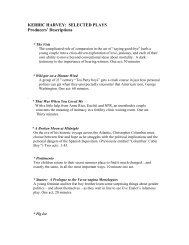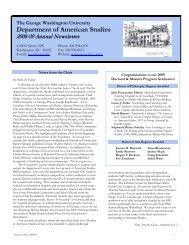Autism Forensic Science Immigration Trends Teaching Recipe for ...
Autism Forensic Science Immigration Trends Teaching Recipe for ...
Autism Forensic Science Immigration Trends Teaching Recipe for ...
You also want an ePaper? Increase the reach of your titles
YUMPU automatically turns print PDFs into web optimized ePapers that Google loves.
spotlight<br />
D.C.-area immigrants<br />
live in suburbs, have<br />
higher levels of<br />
education, and are<br />
entrepreneurial,<br />
rising to prominence<br />
in a number of<br />
business sectors.<br />
d.c. reveals shifting patterns<br />
While most immigration studies focus on los Angeles, New York, Miami, and<br />
Chicago, Price and Chacko have gained attention <strong>for</strong> their research on<br />
Washington. Their findings indicate that a significant proportion of D.C.-area<br />
immigrants live in the suburbs, have higher levels of education, and are<br />
entrepreneurial. Many have risen to prominence in a number of business<br />
sectors—from taxi and parking companies to restaurants, construction, and<br />
telecommunications. Similar patterns are emerging in Atlanta, Dallas-Fort Worth,<br />
and other urban areas seeing recent waves of immigrants.<br />
Price, who recently received the Preston E. James latin American Careerist<br />
Award, has concentrated her research on inflows of Bolivians and the robust<br />
soccer leagues that link latin America immigrants to the communities where<br />
they settle. During D.C.’s construction boom, it was not uncommon to find latin<br />
American immigrants who arrived and, within a day, had both found a job<br />
and joined an amateur soccer league.<br />
www.columbian.gwu.edu immigration page 26<br />
Marie Price, left,<br />
shares a photo with<br />
Bolivian villagers.<br />
The Washington metropolitan area is the<br />
biggest U.S. destination <strong>for</strong> Bolivians. The<br />
first wave arrived in the 1960s and 1970s—<br />
when other latin Americans were settling in<br />
places like Miami, los Angeles, and New<br />
York—because there was less competition<br />
<strong>for</strong> jobs. Political upheaval and Bolivia’s<br />
30,000 percent hyperinflation in the 1980s<br />
brought additional Bolivians. Today they fit<br />
into D.C.’s growing latino community,<br />
which also includes Salvadorans, Mexicans,<br />
Peruvians, and Guatemalans.<br />
“Bolivians as a group have done quite well,<br />
and they tend toward entrepreneurship,” Price


